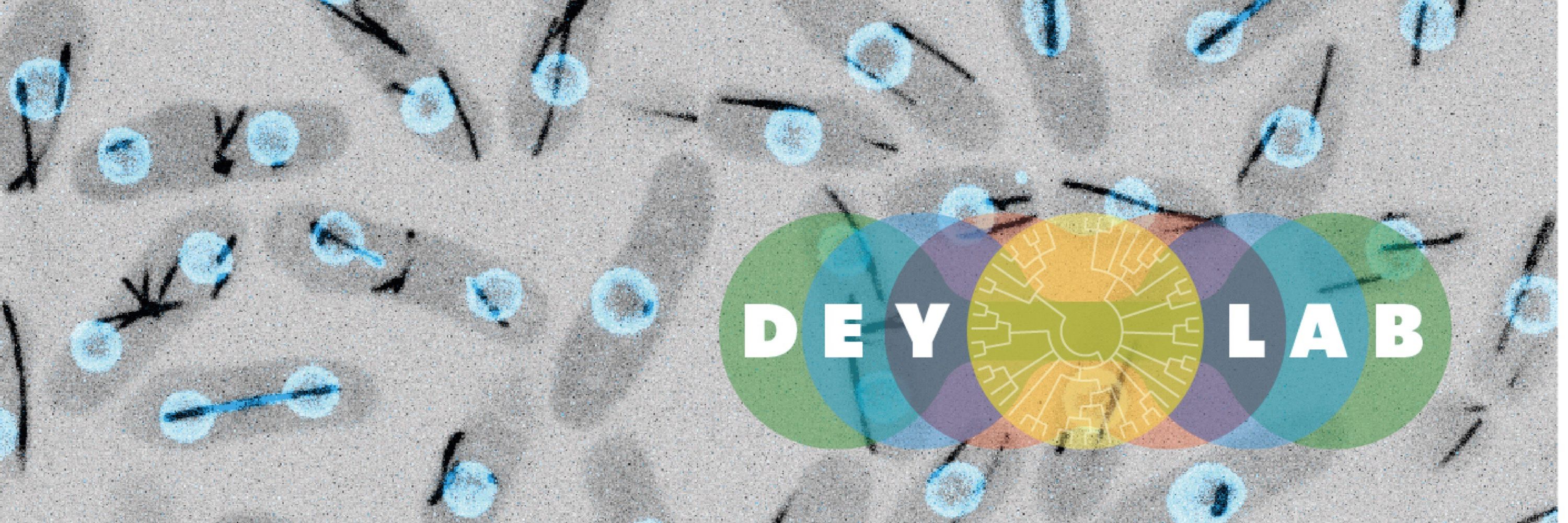
evonuclab.org

Reporting for duty with tales of the weird and wonderful cell biology you never knew you needed to know 🫡
🧪🌏🦠
Discover it in our new Nature paper! We show centromeres transition gradually via a mix of drift, selection, and sex, reaching new states that still work with the kinetochore.
👉 doi.org/10.1038/s41586-025-09779-1

P.S. There are cartoons!
👉 tinyurl.com/4rz4ve6u

P.S. There are cartoons!
👉 tinyurl.com/4rz4ve6u


👉 github.com/JHelsen/point-centromere-detection
👉 github.com/JHelsen/point-centromere-detection
👉 bsky.app/profile/helsenjana.bsky.social/post/3lfwobnnaak2o
Our study shows centromere transitions are a step-by-step process driven by a combination of drift and selection. Discover how the kinetochore interface shapes this gradual change in our new preprint 🥳 doi.org/10.1101/2025.01.16.633479 🧵(1/8)
👉 bsky.app/profile/helsenjana.bsky.social/post/3lfwobnnaak2o
Discover it in our new Nature paper! We show centromeres transition gradually via a mix of drift, selection, and sex, reaching new states that still work with the kinetochore.
👉 doi.org/10.1038/s41586-025-09779-1

Discover it in our new Nature paper! We show centromeres transition gradually via a mix of drift, selection, and sex, reaching new states that still work with the kinetochore.
👉 doi.org/10.1038/s41586-025-09779-1
Scientists studied centromeres in two fungal groups that diverged over a billion years ago to understand the evolutionary pressures that act on them.
Scientists studied centromeres in two fungal groups that diverged over a billion years ago to understand the evolutionary pressures that act on them.
@gautamdey.bsky.social @helsenjana.bsky.social @gsherloc.bsky.social @kausthubh.bsky.social
@gautamdey.bsky.social @helsenjana.bsky.social @gsherloc.bsky.social @kausthubh.bsky.social
New research from EMBL and @Stanford shows how centromeres retain their function despite their rapid rate of change, and the evolutionary constraints that govern this process.
www.nature.com/articles/s41...

New research from EMBL and @Stanford shows how centromeres retain their function despite their rapid rate of change, and the evolutionary constraints that govern this process.
www.nature.com/articles/s41...
Multinucleate life really is everywhere...from deep sea forams to slime molds, intracellular parasites, and beyond. 🚀
We explore how scaling, ecology, & evolution intersect when many nuclei share a single cytoplasm.
doi.org/10.32942/X2M...
Multinucleate life really is everywhere...from deep sea forams to slime molds, intracellular parasites, and beyond. 🚀
We explore how scaling, ecology, & evolution intersect when many nuclei share a single cytoplasm.
doi.org/10.32942/X2M...
doi.org/10.32942/X2M...
We’d love your feedback while this goes through the peer review process!
#MicroEvoSky
#ProtistsonSky 🧪🌏


doi.org/10.32942/X2M...
We’d love your feedback while this goes through the peer review process!
#MicroEvoSky
#ProtistsonSky 🧪🌏
#PlantScience
Paper here: www.science.org/doi/10.1126/...
Perspective here:
www.science.org/doi/10.1126/...

#PlantScience
Paper here: www.science.org/doi/10.1126/...
Perspective here:
www.science.org/doi/10.1126/...
#protistsonsky 🧵
#protistsonsky 🧵
At 63C, most eukaryotic cells would be busy exploding noisily, forget even trying to divide.
The microbial universe never ceases to astound 😍
Thanks for letting us be a tiny part of this! #ExpandThemAll

At 63C, most eukaryotic cells would be busy exploding noisily, forget even trying to divide.
The microbial universe never ceases to astound 😍
Thanks for letting us be a tiny part of this! #ExpandThemAll
Chirality is known to be important for the movement of microorganisms and active matter. In our new paper out today in @natphys.nature.com, we show that chirality is used by malaria parasites to control their motion patterns:
doi.org/10.1038/s415...
Here comes a 🧵 ... (1/9)
Chirality is known to be important for the movement of microorganisms and active matter. In our new paper out today in @natphys.nature.com, we show that chirality is used by malaria parasites to control their motion patterns:
doi.org/10.1038/s415...
Here comes a 🧵 ... (1/9)
Please help us by filling out this questionnaire: docs.google.com/forms/d/e/1F...

Please help us by filling out this questionnaire: docs.google.com/forms/d/e/1F...
If you're interested in protists, parasites, and/or biodiversity then please check out our website:
theholtlab.com/posts/ln5-21...
🚨 Deadlines vary between project.
✉️ Please reach out if you have any questions!




If you're interested in protists, parasites, and/or biodiversity then please check out our website:
theholtlab.com/posts/ln5-21...
🚨 Deadlines vary between project.
✉️ Please reach out if you have any questions!
#ProtistsonSky #ExpandThemAll
@fmikus.bsky.social




#ProtistsonSky #ExpandThemAll
@fmikus.bsky.social
the near-absence of reliable data about climate impacts over most of the
world. Due to the rich world's failure to fund research. We don't know
because our governments don't care. www.theguardian.com/commentisfre...

the near-absence of reliable data about climate impacts over most of the
world. Due to the rich world's failure to fund research. We don't know
because our governments don't care. www.theguardian.com/commentisfre...
www.nature.com/articles/s41...

www.nature.com/articles/s41...
www.science.org/doi/10.1126/...

www.science.org/doi/10.1126/...
Congratulations to all the authors of the paper 🍾!
kwnsfk27.r.eu-west-1.awstrack.me/L0/https:%2F...
Cryo-EM reveals open and closed Asgard chromatin assemblies: Molecular Cell www.cell.com/molecular-ce...

Further details:
jobs.rptu.de/jobposting/1...

Further details:
jobs.rptu.de/jobposting/1...

Naegleria encodes 3 Myo2s which contract its actin network—the first evidence of contractile Myo2 outside of Amorphea.
Myo2 is actually widespread in Naegleria's relatives and correlates with fast cell crawling.
Read more: www.cell.com/current-biol...

Naegleria encodes 3 Myo2s which contract its actin network—the first evidence of contractile Myo2 outside of Amorphea.
Myo2 is actually widespread in Naegleria's relatives and correlates with fast cell crawling.
Read more: www.cell.com/current-biol...

